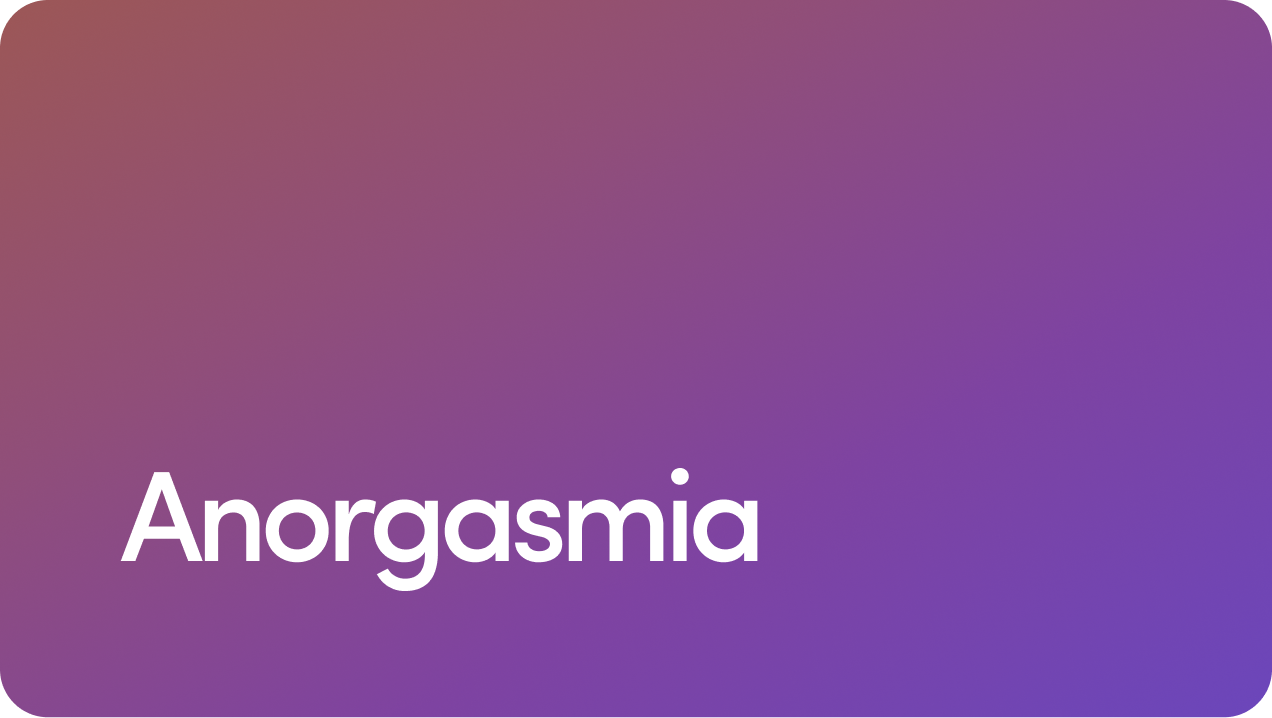Content
Your sex life, your way
11 Nitric Oxide Foods: What to Eat for Better Sexual and Heart Health

If you’ve ever wished for better circulation — not just for your heart, but, well … everywhere — it’s worth looking into nitric oxide (NO).
No, not the laughing gas at your dentist’s office. We’re talking about the naturally occurring molecule that keeps your blood flowing smoothly.
Nitric oxide plays a crucial role in men’s sexual health, especially in achieving and maintaining erections.
So, knowing how to boost it naturally through diet can be a smart strategy — plus, eating more nitric oxide foods is a simple way to improve your nutrition. What are the best nitric oxide foods, then?
Let’s dive into why NO matters, what foods have nitric oxide, how they can help you maintain better erections, and lifestyle tips for improving blood flow to all the right places.
Content
Why Is Nitric Oxide Important?
Nitric oxide might not be something you think about daily, but your body certainly does. This tiny but mighty molecule plays a key role in keeping blood vessels relaxed and open (called vasodilation).
Why does this matter? At-ease blood vessels allow for better circulation, ensuring oxygen and nutrients reach the places in the body where they’re needed most.
Your body naturally produces some nitric oxide using certain amino acids (the building blocks of proteins) and enzymes. However, diet and lifestyle choices can influence how much you make.
For instance, regular moderate exercise, not smoking, healthy stress-management tools, adequate sleep, and a nutrient-dense diet are all essential for NO production to support cardiovascular and sexual health.
Without enough nitric oxide, your blood flow isn’t as efficient or easy as it should be. Energy levels might drop, and various bodily functions — including some you really don’t want lagging — can take a hit.
Now that you understand how it works in the body, let’s go over some of the most critical benefits of nitric oxide for overall well-being. Having healthy levels of nitric oxide (and eating foods rich in nitric oxide) might:
Boost exercise performance
Support heart health
Enhance male sexual health
Keep scrolling for insight.
1. Nitric Oxide Might Boosts Exercise Performance
Whether you’re lifting weights or going for a run, nitric oxide has an important role. It helps deliver oxygen to your muscles more efficiently. This means less fatigue, more endurance, and a quicker recovery after a good sweat sesh.
Foods with nitric oxide (or high in dietary nitrates) have even been linked to improved stamina and athletic performance.
Can too much exercise cause erectile dysfunction? Our blog dives into the research.
2. Nitric Oxide Supports Heart Health
The way nitric oxide helps keep blood vessels relaxed and flexible reduces the strain on your heart — so this vital organ doesn’t have to work so hard to maintain normal circulation.
As a result, nitric oxide indirectly helps support healthy blood pressure and lowers the risk of cardiovascular issues.
Poor NO production is often linked to conditions like high blood pressure (hypertension) and atherosclerosis (buildup of artery-clogging plaque), making it essential for long-term heart health.
3. Nitric Oxide May Enhance Male Sexual Health
Since getting and staying hard depends on good blood flow, the production of nitric oxide is a key player in sexual function. It helps relax the smooth muscle in the penis, allowing blood to flow freely — an essential component of achieving and maintaining an erection.
Low NO levels are often seen in men with erectile dysfunction (ED), particularly those with underlying cardiovascular conditions.
This doesn’t mean NO-boosting foods (or nitric oxide supplements) can stand in for ED medication and other lifestyle habits. But they might support better circulation and overall vascular health, making them a valuable part of the equation.
Next, we’ll round up 11 of the best nitric oxide foods for erectile dysfunction and heart health.
The best nitric oxide foods include:
Spinach
Beets
Arugula
Pomegranate
Citrus fruits
Watermelon
Dark chocolate
Walnuts
Pumpkin seeds
Garlic
Red leaf lettuce
Here’s what to know about these nitric oxide-rich foods.
1. Spinach
Spinach is loaded with dietary nitrates, which your body converts into nitrites and then nitric oxide through a process that starts with bacteria in your mouth and continues in your digestive system.
These nitrates can then help widen your blood vessels, improving circulation and oxygen delivery and reducing high blood pressure.
Try spinach:
Blended into smoothies with banana slices and almond milk
Tossed into salads with a citrus-based dressing to enhance nitrate absorption
Sautéed with garlic and olive oil as a simple side dish
Mixed into scrambled eggs or omelets
We’ve also covered foods that help with ED — and spinach is one of them.
2. Beets
Beets are nitrate powerhouses — studies show that eating them is a good way to boost nitric oxide levels quickly. They’ve been linked to improved exercise performance and lower blood pressure. Beetroot juice, in particular, has been studied for its effects on endurance.
In a small 2018 study with 28 adult men and women, researchers found that drinking 70 milliliters (about 2.4 ounces) of beetroot juice increased levels of nitric oxide in the body by 21 percent within 45 minutes.
Furthermore, a systematic review of 11 studies found that drinking beet juice is promising to help reduce high blood pressure in some people.
Try this:
Drink fresh beet juice before a workout.
Roast beets and toss with balsamic vinegar for a tasty side.
Blend beets into smoothies for a natural energy boost.
Grate raw beets into salads or slaws.
Read more in our guide to beetroot benefits for men.
3. Arugula
Another delicious option, arugula, contains one of the highest concentrations of dietary nitrates among green leafy vegetables.
One study found that even short-term consumption of nitrate-rich vegetables can effectively increase nitric oxide levels in the blood and reduce blood pressure to the same extent as drinking beet juice.
Try arugula:
As a peppery base for salads
Tossed on top of pizza or open-faced sandwiches for an extra kick
Blended into pesto for a nitrate-rich pasta sauce
Added to grain bowls with roasted vegetables and beans
Whole grains and green veggies are part of our weight loss diet plan for men.
4. Pomegranate
Pomegranates are rich in antioxidants that protect nitric oxide from breaking down, allowing it to stay active in the body longer. They also improve blood flow by reducing oxidative stress in blood vessels.
In a 2019 study among 60 people with type 2 diabetes, researchers found that drinking 200 milliliters (around 6.8 ounces) per day for six weeks could decrease systolic and diastolic blood pressure (the first and second numbers on a blood pressure reading).
Try this:
Sprinkle pomegranate seeds over yogurt or oatmeal.
Blend pomegranate into smoothies with spinach and citrus fruits.
Mix pomegranate seeds into salads with walnuts and arugula.
Drink unsweetened pomegranate juice.
By the way, pomegranate juice is thought to be among the best drinks for ED.
5. Citrus Fruits
Citrus fruits — like oranges, lemons, limes, and grapefruit — are packed with vitamin C, an antioxidant that helps stabilize nitric oxide and prevent it from degrading. They also contain flavonoids that support healthy circulation and endothelial function (the endothelium is the thin layer of cells lining blood vessels).
Research shows that eating citrus fruits can be associated with better cardiovascular health and brain function, potentially because of the way they support NO levels.
Try this:
Squeeze fresh lemon juice over salads and roasted veggies.
Eat an orange or grapefruit as a snack.
Blend fresh or frozen citrus fruits into smoothies for a vitamin C boost.
Infuse water with citrus slices for an easy NO-boosting drink.
6. Watermelon
Watermelon is one of the most well-known food sources of nitrates. It’s rich in L-citrulline, an amino acid that converts to another amino acid called L-arginine, which then boosts nitric oxide production.
Theoretically, this makes watermelon particularly beneficial for circulation and blood flow. Plus, it’s super hydrating.
A 2017 research review concluded that eating more watermelon can have positive effects on exercise performance, circulation, and blood pressure.
Try this:
Eat fresh watermelon slices as a refreshing snack.
Blend sliced watermelon into smoothies with mint and lime.
Freeze watermelon chunks for a hydrating frozen treat.
Whip up a watermelon and feta salad with basil.
7. Dark Chocolate
Dark chocolate contains flavonoids (plant compounds with antioxidant and anti-inflammatory properties) that stimulate nitric oxide production and improve blood vessel function. It also reduces oxidative stress, helping NO stay active longer.
In a randomized controlled trial, participants who ate 30 grams per day of dark chocolate for 15 days experienced significantly increased nitric oxide levels and reduced systolic blood pressure compared to a control group, who ate 25 grams of white chocolate per day.
You won’t reap circulation rewards from eating leftover Halloween candy, though — the most benefit comes from dark chocolate that’s at least 70 percent cocoa.
Try this:
Eat a small square of dark chocolate as a daily treat.
Melt dark chocolate chips and drizzle over fruit like bananas or strawberries.
Add cocoa powder to smoothies, oatmeal, or homemade energy bites.
Make homemade hot cocoa with unsweetened cocoa powder.
8. Walnuts
Walnuts are an excellent source of L-arginine — as noted, this amino acid directly supports nitric oxide production. They also provide omega-3 fatty acids, which benefit heart health and brain function.
Studies show that a higher intake of arginine is associated with higher blood nitric oxide levels.
Try this:
Sprinkle chopped walnuts on salads or yogurt.
Blend walnut pieces into homemade energy bars.
Add walnuts to oatmeal or overnight oats for a crunchy, heart-healthy boost.
Use walnut butter as a spread on toast.
9. Pumpkin Seeds
Pumpkin seeds also provide L-arginine along with magnesium, a mineral that helps regulate nitric oxide production and blood vessel function. Magnesium also plays a role in muscle relaxation and circulation.
In one study, researchers found that pumpkin seed oil offers anti-hypertensive (preventing high blood pressure) and heart-protective effects, likely because it affects nitric oxide production.
Try this:
Eat a handful of roasted pumpkin seeds as a snack.
Sprinkle over salads or grain bowls.
Blend into smoothies for a nutrient boost.
Use pumpkin seed butter as a spread for whole-grain toast.
We’ve also covered pumpkin seed oil for hair growth.
10. Garlic
Garlic stimulates nitric oxide synthase, an enzyme responsible for nitric oxide production. It also helps relax blood vessels and improve overall circulation.
Studies have shown that eating garlic improves exercise tolerance in adults with coronary artery disease. It might also help lower blood pressure in those with hypertension.
Try this:
Mince fresh garlic into salad dressings and dips.
Sauté garlic with vegetables or stir into soups and stews.
Roast whole garlic cloves for a mild, sweet flavor.
Add garlic to marinades for extra heart-healthy benefits.
11. Red Leaf Lettuce
Like other leafy green vegetables, red leaf lettuce has high nitrate content, which the body converts into nitric oxide to support blood vessel function and overall cardiovascular health.
Try this:
Use red leaf lettuce as a base for salads with citrus dressing.
Wrap red lettuce leaves around sandwich fillings for a low-carb alternative.
Toss chopped lettuce into grain bowls for extra texture and nutrients.
Add red leaf lettuce to tacos for a fresh, crunchy element.
What are the best foods for male virility? Our blog has answers.
What you eat plays a significant role in boosting nitric oxide levels, but putting more foods high in nitrates on your grocery list is only one factor.
Here are additional ways to naturally enhance NO:
Exercise regularly. When you exercise, blood vessels expand to accommodate increased blood flow, which triggers the release of nitric oxide. Aim for at least 150 minutes of moderate-intensity exercise per week (like running, biking, cross-training workouts, or swimming), plus at least two days of strength training.
Get enough sleep. Poor sleep can negatively impact nitric oxide levels, leading to reduced blood flow, increased inflammation, and a higher risk of heart disease. Chronic sleep deprivation is linked to lower NO synthesis and bioavailability, which can contribute to high blood pressure and erectile dysfunction. Experts say adults need seven to nine hours a night.
Manage your stress. High stress and anxiety are linked to an increased risk of ED. Stress-management tools can help, like journaling, going outside, listening to calming music, or deep breathing.
Limit alcohol and don’t smoke. Tobacco smoke contains chemicals that damage blood vessels, reduce NO, and promote cardiovascular disease and ED. Similarly, excessive alcohol can impair NO production and lead to long-term vascular issues.
Increasing nitric oxide isn’t just about eating the right foods. It calls for a comprehensive approach that includes exercise, proper sleep, stress management, and avoiding harmful habits.
Additionally, prescription medications for ED can be very effective alongside making healthier lifestyle changes. Phosphodiesterase type 5 (PDE5) inhibitors — like Viagra® (sildenafil), Cialis® (tadalafil), and Stendra® (avanafil) — help increase blood flow to the penis for better erections.
Read more about PDE5 inhibitors in our guide.
Nitric oxide plays a central role in whole-body circulation, heart health, and sexual function. While your body naturally produces some NO on its own, certain foods are rich in dietary nitrates — and eating more of them supports the cause.
Here are the key takeaways about nitric oxide foods:
There are lots of NO-boosting foods. A diet rich in leafy greens, beets, pomegranates, and citrus fruits can support better blood flow and cardiovascular function. Plus, these foods are just plain good for you, providing an array of vitamins, minerals, fiber, and antioxidants. Need more personalized help with nutrition? We suggest consulting a dietitian.
Dietary nitrates are just one piece of the puzzle. Lifestyle factors like regular exercise, stress management, and not smoking are just as vital as diet in maintaining optimal nitric oxide levels and supporting healthy sexual function.
It’s important to seek medical advice for ED. While nitric oxide foods may help with mild to moderate erectile dysfunction, they’re not a standalone cure. More severe cases often require medical evaluation and treatment.
If you’re experiencing persistent ED, consult a healthcare provider to discuss potential underlying causes and the best course of action for your health.
Check out our men’s sexual health resources. If you’re interested in connecting with a licensed healthcare professional about ED or other concerns, start by taking our free online assessment.
30 Sources
- Alharbi MH, et al. (2016). Flavonoid-rich orange juice is associated with acute improvements in cognitive function in healthy middle-aged males. https://pmc.ncbi.nlm.nih.gov/articles/PMC5009163/
- Allen M, et al. (2023). The psychology of erectile dysfunction. https://journals.sagepub.com/doi/10.1177/09637214231192269
- Ashor AW, et al. (2015).Exercise modalities and endothelial function: a systematic review and dose-response meta-analysis of randomized controlled trials. https://pubmed.ncbi.nlm.nih.gov/25281334/
- Bahari H, et al. (2024). The effects of pomegranate consumption on blood pressure in adults: a systematic review and meta-analysis. https://pubmed.ncbi.nlm.nih.gov/38410857/
- Bain AR, et al. (2017). Insufficient sleep is associated with impaired nitric oxide-mediated endothelium-dependent vasodilation. https://pubmed.ncbi.nlm.nih.gov/28846879/
- Bondonno CP, et al. (2012). Flavonoid-rich apples and nitrate-rich spinach augment nitric oxide status and improve endothelial function in healthy men and women: a randomized controlled trial. https://pubmed.ncbi.nlm.nih.gov/22019438/
- Burnett AL. (2006). The role of nitric oxide in erectile dysfunction: implications for medical therapy. https://pmc.ncbi.nlm.nih.gov/articles/PMC8109295/
- Cyr AR, et al. (2020). Nitric oxide and endothelial dysfunction. https://pubmed.ncbi.nlm.nih.gov/32172815/
- Dhaliwal A, et al. (2023). PDE5 inhibitors. https://pubmed.ncbi.nlm.nih.gov/31751033/
- El-Mosallamy AE, et al. (2012). Antihypertensive and cardioprotective effects of pumpkin seed oil. https://pubmed.ncbi.nlm.nih.gov/22082068/
- Figueroa A, et al. (2017). Influence of L-citrulline and watermelon supplementation on vascular function and exercise performance. https://pubmed.ncbi.nlm.nih.gov/27749691/
- Jaspan J, et al. (2024). The role of sleep in cardiovascular disease. https://link.springer.com/article/10.1007/s11883-024-01207-5
- Jones AM, et al. (2018). Dietary nitrate and physical performance. https://pubmed.ncbi.nlm.nih.gov/30130468/
- Jovanovski E, et al. (2015). Effect of spinach, a high dietary nitrate source, on arterial stiffness and related hemodynamic measures: a randomized, controlled trial in healthy adults. https://pmc.ncbi.nlm.nih.gov/articles/PMC4525132/
- Karadayian AG, et al. (2021). Alcohol hangover induces nitric oxide metabolism changes by impairing NMDA receptor-PSD95-nNOS pathway. https://pubmed.ncbi.nlm.nih.gov/33962017/
- Kiani AK, et al. (2022). Dietary supplements for improving nitric-oxide synthesis. https://pmc.ncbi.nlm.nih.gov/articles/PMC9710401/
- Kroll JL, et al. (2018). Acute ingestion of beetroot juice increases exhaled nitric oxide in healthy individuals. https://pmc.ncbi.nlm.nih.gov/articles/PMC5784918/
- Lidder S, et al. (2013). Vascular effects of dietary nitrate (as found in green leafy vegetables and beetroot) via the nitrate-nitrite-nitric oxide pathway. https://pmc.ncbi.nlm.nih.gov/articles/PMC3575935/
- Magrone T, et al. (2017). Cocoa and dark chocolate polyphenols: from biology to clinical applications. https://pmc.ncbi.nlm.nih.gov/articles/PMC5465250/
- Mirmiran P, et al. (2016). The association of dietary l-arginine intake and serum nitric oxide metabolites in adults: a population-based study. https://pmc.ncbi.nlm.nih.gov/articles/PMC4882723/
- Ocampo B, et al. (2018). Dietary nitrate from beetroot juice for hypertension: a systematic review. https://pmc.ncbi.nlm.nih.gov/articles/PMC6316347/
- Onakpoya I, et al. (2017). The effect of grapefruits (Citrus paradisi) on body weight and cardiovascular risk factors: a systematic review and meta-analysis of randomized clinical trials. https://pubmed.ncbi.nlm.nih.gov/25880021/
- Oja P, et al. (2011). Physical activity recommendations for public health: development and policy context. https://pmc.ncbi.nlm.nih.gov/articles/PMC3405391/
- Ried K. (2020). Garlic lowers blood pressure in hypertensive subjects, improves arterial stiffness and gut microbiota: a review and meta-analysis. https://pmc.ncbi.nlm.nih.gov/articles/PMC6966103/
- Sohrab G, et al. (2019). Effects of pomegranate juice consumption on blood pressure and lipid profile in patients with type 2 diabetes: a single-blind randomized clinical trial. https://pubmed.ncbi.nlm.nih.gov/30661697/
- Sudarma V, et al. (2011). Effect of dark chocolate on nitric oxide serum levels and blood pressure in prehypertension subjects. https://pubmed.ncbi.nlm.nih.gov/22156352/
- van der Avoort C, et al. (2020). A nitrate-rich vegetable intervention elevates plasma nitrate and nitrite concentrations and reduces blood pressure in healthy young adults. https://www.jandonline.org/article/S2212-2672(20)30198-2/fulltext
- Verma SK, et al. (2005). Effect of garlic (Allium sativum) oil on exercise tolerance in patients with coronary artery disease. https://pubmed.ncbi.nlm.nih.gov/15881870/
- Verze P, et al. (2015). The link between cigarette smoking and erectile dysfunction: a systematic review. https://pubmed.ncbi.nlm.nih.gov/28723353/
- Zhang F, et al. (2022). Short sleep duration and erectile dysfunction: a review of the literature. https://pmc.ncbi.nlm.nih.gov/articles/PMC9621223/
Editorial Standards
Hims & Hers has strict sourcing guidelines to ensure our content is accurate and current. We rely on peer-reviewed studies, academic research institutions, and medical associations. We strive to use primary sources and refrain from using tertiary references. See a mistake? Let us know at [email protected]!
This article is for informational purposes only and does not constitute medical advice. The information contained herein is not a substitute for and should never be relied upon for professional medical advice. Always talk to your doctor about the risks and benefits of any treatment. Learn more about our editorial standards here.

Kelly Brown MD, MBA
Dr. Kelly Brown is a board certified Urologist and fellowship trained in Andrology. She is an accomplished men’s health expert with a robust background in healthcare innovation, clinical medicine, and academic research. Dr. Brown was previously Medical Director of a male fertility startup where she lead strategy and design of their digital health platform, an innovative education and telehealth model for delivering expert male fertility care.
She completed her undergraduate studies at University of North Carolina at Chapel Hill (go Heels!) with a Bachelor of Science in Radiologic Science and a Minor in Chemistry. She took a position at University of California Los Angeles as a radiologic technologist in the department of Interventional Cardiology, further solidifying her passion for medicine. She also pursued the unique opportunity to lead departmental design and operational development at the Ronald Reagan UCLA Medical Center, sparking her passion for the business of healthcare.
Dr. Brown then went on to obtain her doctorate in medicine from the prestigious Northwestern University - Feinberg School of Medicine and Masters in Business Administration from Northwestern University - Kellogg School of Management, with a concentration in Healthcare Management. During her surgical residency in Urology at University of California San Francisco, she utilized her research year to focus on innovations in telemedicine and then served as chief resident with significant contributions to clinical quality improvement. Dr. Brown then completed her Andrology Fellowship at Medical College of Wisconsin, furthering her expertise in male fertility, microsurgery, and sexual function.
Her dedication to caring for patients with compassion, understanding, as well as a unique ability to make guys instantly comfortable discussing anything from sex to sperm makes her a renowned clinician. In addition, her passion for innovation in healthcare combined with her business acumen makes her a formidable leader in the field of men’s health.
Dr. Brown is an avid adventurer; summiting Mount Kilimanjaro in Tanzania (twice!) and hiking the incredible Torres del Paine Trek in Patagonia, Chile. She deeply appreciates new challenges and diverse cultures on her travels. She lives in Denver with her husband, two children, and beloved Bernese Mountain Dog. You can find Dr. Brown on LinkedIn for more information.
Education & Training
Andrology Fellowship, Medical College of Wisconsin
Urology Residency, University of California San Francisco
M.D. Northwestern University Feinberg School of MedicineB.S. in Radiologic Science, Chemistry Minor, University of North Carolina at Chapel Hill
Research
Published as Kelly Walker
Cowan, B, Walker, K., Rodgers, K., Agyemang, J. (2023). Hormonal Management Improves Semen Analysis Parameters in Men with Abnormal Concentration, Motility, and/or Morphology. Fertility and Sterility, Volume 118, Issue 5, e4. https://www.sciencedirect.com/journal/fertility-and-sterility/vol/120/issue/1/suppl/S
Walker, K., Gogoj, A., Honig, S., Sandlow, J. (2021). What’s New in Male Contraception? AUA Update Series, Volume 40. https://auau.auanet.org/content/update-series-2021-lesson-27-what%E2%80%99s-new-male-contraception
Walker, K., Shindel, A. (2019). AUA Erectile Dysfunction Guideline. AUA Update Series, Volume 38. https://auau.auanet.org/content/course-307
Walker, K., Ramstein, J., & Smith, J. (2019). Regret Regarding Fertility Preservation Decisions Among Male Cancer Patients. The Journal of Urology, 201(Supplement 4), e680-e681. https://www.auajournals.org/doi/10.1097/01.JU.0000556300.18991.8e
Walker, K., & Smith, J. (2019). Feasibility Study of Video Telehealth Clinic Visits in Urology. The Journal of Urology, 201(Supplement 4), e545-e545. https://www.auajournals.org/doi/10.1097/01.JU.0000556071.60611.37
Related Articles
Related Conditions
 Erectile Dysfunction
Erectile Dysfunction
 Premature Ejaculation
Premature Ejaculation
 Low Testosterone
Low Testosterone
 Retrograde Ejaculation
Retrograde Ejaculation
 Pelvic Floor Dysfunction
Pelvic Floor Dysfunction
 Anorgasmia
Anorgasmia